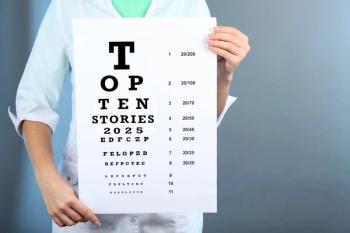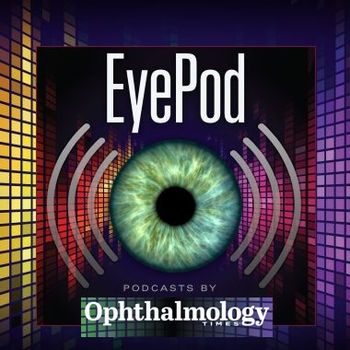
Aspheric features benefit patients with multifocal IOLs
Results of a study evaluating contrast sensitivity in patients with a multifocal IOL (ReZoom, Advanced Medical Optics) implanted corroborate anecdotal reports that this zonal refractive implant provides excellent quality of vision under photopic conditions.
Key Points
Chicago-Results from contrast sensitivity testing are consistent with the concept that a multifocal IOL (ReZoom, Advanced Medical Optics) has some aspheric qualities that provide a benefit to patients under photopic conditions, said George H. Beiko, BM, BCh, FRCSC, at the annual meeting of the American Society of Cataract and Refractive Surgery.
Dr. Beiko and colleagues conducted a study comparing contrast sensitivity in groups of patients with the multifocal IOL or an aspheric monofocal IOL (Tecnis, Advanced Medical Optics) implanted. Dr. Beiko performed all of the surgeries using the same technique, and all patients were targeted for emmetropia. Contrast sensitivity testing was performed with the same instrument (Stereo Optical VT1600X, Stereo Optical) that was used in the original evaluations of the aspheric monofocal IOL.
Each implant group included 20 patients, who were similar with respect to mean age, photopic and mesopic pupil size, corrected visual acuity, mean spherical equivalent, and corneal spherical aberration measured at 6 mm. Contrast sensitivity was measured at five standard spatial frequencies (1.5, 3, 6, 12, and 18 cpd), with best distance correction at a minimum of 4 weeks postoperatively.
"These findings are consistent with our own clinical observations and reports from others that patients with the [multifocal IOL] implanted can anticipate excellent photopic vision comparable to that associated with an aspheric monofocal lens. However, there is a cost for the benefit of multifocality and that is some decrease in the quality of mesopic vision," said Dr. Beiko, a private practitioner in St. Catharine's, Ontario, and assistant professor of ophthalmology, McMaster University, Hamilton, Ontario.
Lens design
Dr. Beiko inferred that aspheric qualities of the central zones of the multifocal IOL explain the contrast sensitivity results.
He noted that in redesigning the optic zones to create the multifocal IOL, zones 2 and 3 were made aspheric in order to address some of the problems of a first-generation multifocal IOL (Array, Advanced Medical Optics). Vision occurs through zones 2 and 3 under photopic conditions, whereas when the pupil enlarges under mesopic conditions, it becomes involved with the non-aspheric zone 4 of the multifocal IOL.
In the study group of patients with the multifocal IOL implanted, the mean photopic pupil size was 3.79 mm, which translates into 3.3 mm at the IOL plane. Under mesopic conditions, the mean pupil diameter was 5.05 mm at the corneal plane or 4.39 mm at the IOL plane. In the multifocal IOL, zone 2 has an inner diameter of 2.1 mm and an outer diameter of 3.44 mm, zone 3 has an inner diameter of 3.44 mm and an outer diameter of 4.30 mm, and zone 4 has an inner diameter of 4.30 mm and an outer diameter of 4.6 mm.
Dr. Beiko noted that contrast sensitivity in patients with a spherical monofocal IOL implanted is no better than in age-matched phakic patients, while contrast sensitivity is reduced in patients with other spherical multifocal IOLs implanted. For example, the first-generation multifocal IOL has been reported to decrease contrast sensitivity 35% to 40%, and a diffractive IOL (ReSTOR, Alcon) decreased contrast sensitivity up to 20% more than a standard IOL.
Based on anecdotal observations that the multifocal IOL provides superior quality of vision compared with those other multifocal IOLs, Dr. Beiko and colleagues performed an initial study where they compared the contrast sensitivity of two patients with multifocal IOLs with historical data from eight young adults (aged 20 to 30 years) with good uncorrected visual acuity.
"We were surprised to see the results in the two groups were comparable under photopic conditions and in mesopic testing as well," Dr. Beiko said.
The study on which he reported was designed to investigate further quality of vision with the multifocal IOL.
Newsletter
Don’t miss out—get Ophthalmology Times updates on the latest clinical advancements and expert interviews, straight to your inbox.













































